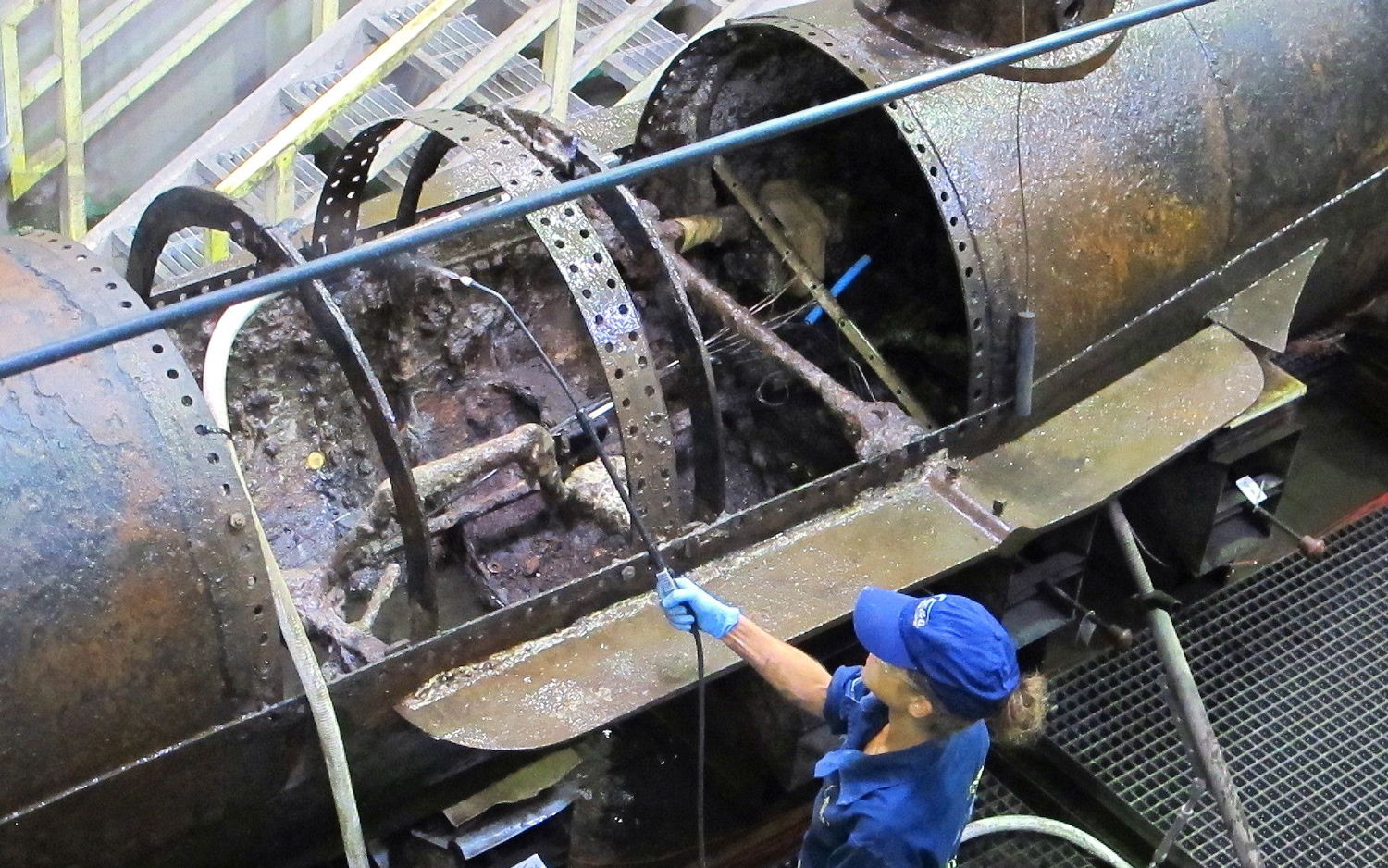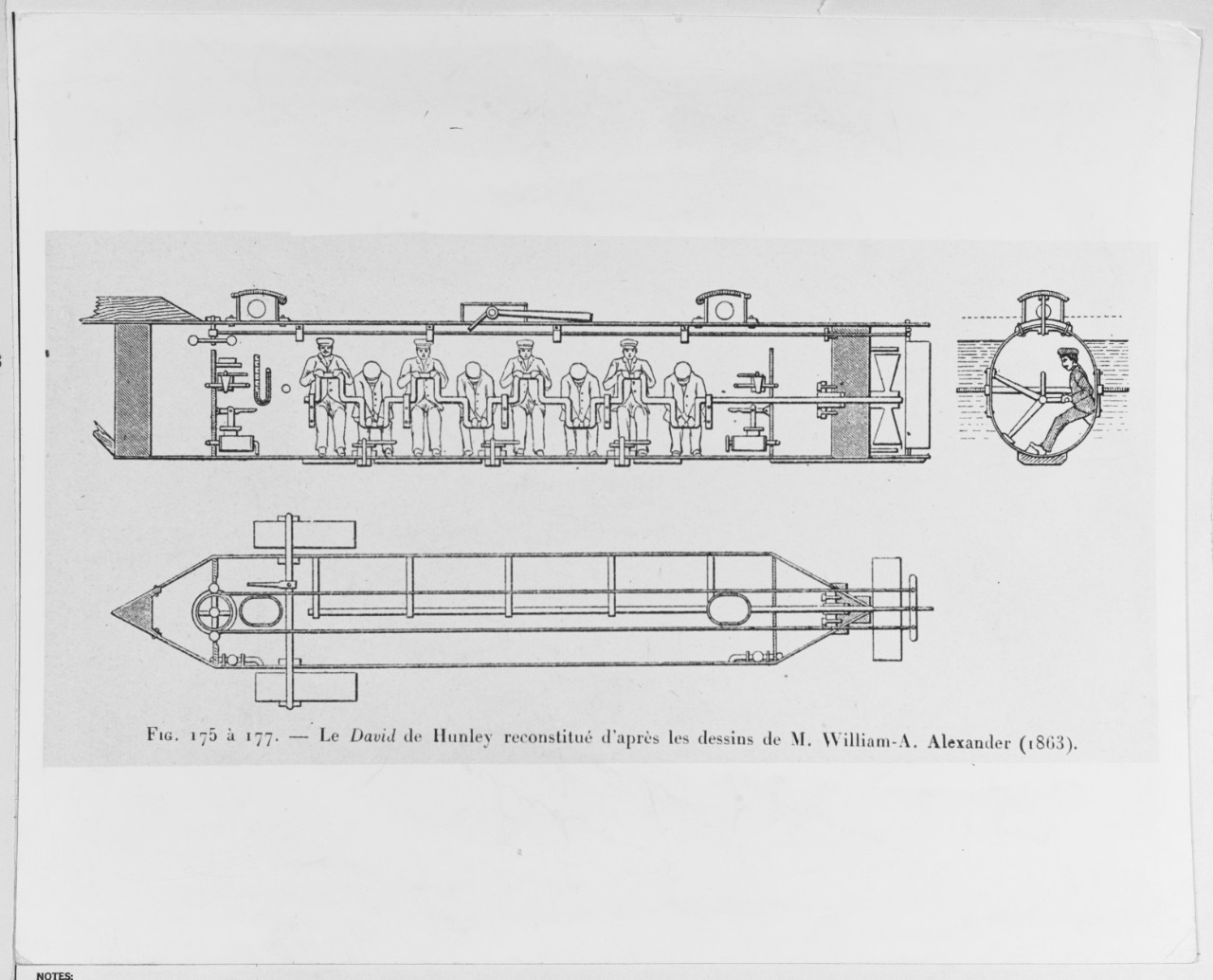Hidden Compartments in This Wrecked Confederate Submarine Could Solve a 150-Year-Old Mystery

The Confederate submarine H.L. Hunley was a 40-foot-long (12 meter) sausage of bulletproof iron built in Mobile, Alabama, and propelled through the water by seven daring men cranking a single, giant screw.
It was, it's fair to say, not the safest place in which to spend the Civil War. During the Hunley's brief career, between July 1863 and February 1864, the primitive sub sank three times, which resulted in the deaths of 21 of its own crewmen. Nevertheless, on Feb. 17, 1864, the Hunley made history by ramming a live torpedo into the hull of the Union warship USS Housatonic, becoming the first submarine in history to successfully sink an enemy vessel.
Unfortunately, the Hunley sank, too — for its third and final time — shortly after the battle, which resulted in the deaths of its final eight crewmen (seven manning the crank and an eighth steering the ship).
Why the Hunley disappeared that day and how its last crewmen perished have remained mysteries for the better part of two centuries. But on Wednesday (July 18), marine archaeologists at Clemson University in South Carolina unveiled an important new clue in the Hunley enigma. [The 20 Most Mysterious Shipwrecks Ever]
According to a video released by the Hunley museum in North Charleston, South Carolina, researchers recently discovered a hidden fail-safe mechanism in the Hunley's keel that could have helped the crew escape to the surface in an emergency. The mechanism included a series of heavy metal slabs known as "keel blocks," which weighed close to 1,000 lbs. (454 kilograms) and could be dropped from the bottom of the sub with the pull of a lever.
But they weren't. According to Michael Scafuri, a marine archaeologist at Clemson University who has been studying the Hunley for 18 years, the keel blocks were all found locked in place and the levers untouched. For whatever reason, the crew of the Hunley did not try to escape the ocean floor.
"It's more evidence there wasn't much of a panic on board," Scafuri told the Associated Press.
Get the world’s most fascinating discoveries delivered straight to your inbox.
Dead in the water
The discovery adds fuel to the theory that the final crewmen of the Hunley were either resigned to their watery fate — or they just didn't see it coming. Previous surveys of the wreck have found that the bones of all eight crewmembers had not budged from the men's posts; if there was panic among the ranks, nobody let it show.
One recent hypothesis, raised in a 2017 study by researchers at Duke University, suggests that the crew of the Hunley accidentally killed themselves with the shockwaves from their torpedo's explosion. The fateful torpedo was attached to the bow of the Hunley by a metal spar less than 16 feet (5 meters) long. According to the researchers, who conducted a (very cool) scale reproduction of the explosion using model ships, the resulting shockwaves from the torpedo blast would have been powerful enough to burst the blood vessels in the crewmen's lungs and brains. Such a blast would have probably incapacitated the crew, if it didn’t kill them outright.
The wreck of the Hunley was first discovered 4 miles (6.4 kilometers) off the coast of Charleston, South Carolina, in 1995 and was raised from Charleston Harbor in 2000. Over the following decades, conservators have scraped away the centuries-old schmutz of silt, sand and sea life known as "concretion" that had covered the ship. Researchers have since removed more than 1,200 lbs. of the accumulated gunk, revealing the original body of the Hunley for the first time since its mysterious disappearance.
As scientists continue stripping concretion away from the sub's interior, more revelations from the Hunley's final voyage are likely to surface.
"We keep seeing parts that no one has seen in 150 years," Scafuri told the AP. "All of them add into the mix of what happened and how this sub was operated."
Originally published on Live Science.

Brandon is the space / physics editor at Live Science. With more than 20 years of editorial experience, his writing has appeared in The Washington Post, Reader's Digest, CBS.com, the Richard Dawkins Foundation website and other outlets. He holds a bachelor's degree in creative writing from the University of Arizona, with minors in journalism and media arts. His interests include black holes, asteroids and comets, and the search for extraterrestrial life.



